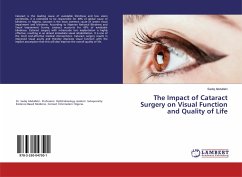
Visual Psychophysics
Basic and Practical Principles
Versandkostenfrei!
Versandfertig in 1-2 Wochen
26,99 €
inkl. MwSt.

PAYBACK Punkte
13 °P sammeln!
The use of vision as a source of survival and adaptation to the environment is an evolutionary mechanism. From light entering the retina to phototransduction, a series of transformations take place so that spatial visual processing can occur. The presence of disorders allows the understanding of 'normal' processing as diseases can be considered a 'reduced' version of healthy functioning. The use of visual psychophysics to evaluate spatial vision allows us to locate and observe the functioning of receptors, differentiating the functioning mediated by cones and rods, for example. Thus, understan...
The use of vision as a source of survival and adaptation to the environment is an evolutionary mechanism. From light entering the retina to phototransduction, a series of transformations take place so that spatial visual processing can occur. The presence of disorders allows the understanding of 'normal' processing as diseases can be considered a 'reduced' version of healthy functioning. The use of visual psychophysics to evaluate spatial vision allows us to locate and observe the functioning of receptors, differentiating the functioning mediated by cones and rods, for example. Thus, understanding spatial vision is of great importance for the neurosciences, since it is possible to draw parallels on neurophysiological mechanisms and their relationships with neuropsychiatric disorders, for example. In this book, specifically, we will address the relationship between visual psychophysics and schizophrenia.














